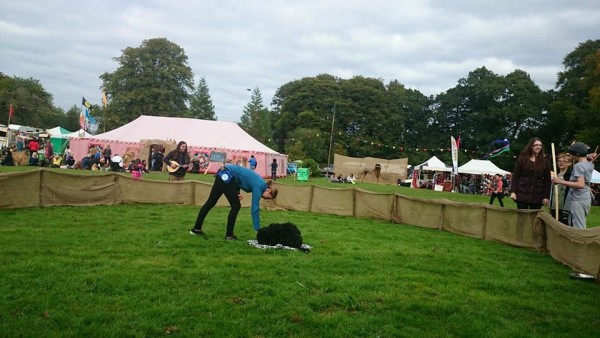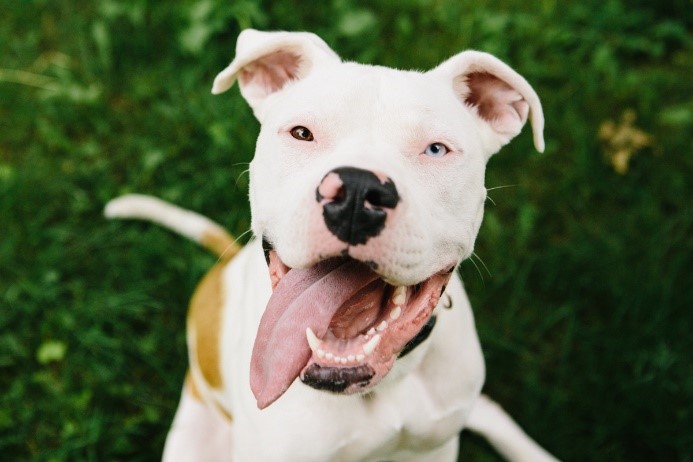Being a dog trainer is an amazing job and people remark all the time “it must be so fun to work with dogs all day”… it is… but that’s not what I do! 
 I train PEOPLE to train their dogs and firmly believe that within every pet dog owner there is a skilled trainer just waiting to shine, it is all about giving them the tools to do so. With the type of training approach that I employ, the objective is to set EVERYONE up to succeed. This differs from traditional training which emphasised unwavering control over the dog, unfortunately often through the use of punishment.
I train PEOPLE to train their dogs and firmly believe that within every pet dog owner there is a skilled trainer just waiting to shine, it is all about giving them the tools to do so. With the type of training approach that I employ, the objective is to set EVERYONE up to succeed. This differs from traditional training which emphasised unwavering control over the dog, unfortunately often through the use of punishment.
So instead of “YAY you got it RIGHT” it was “NO you got it WRONG”.
So what it wrong with telling your dog off when they do something wrong?
- It is only half of the story as you are telling your dog “don’t do that” but not “do this instead”.
- Punishment is only successful, by its definition, if it reduces or eliminates a behaviour – so if your dog doesn’t stop when you tell them off for pulling on the lead, how far will you potentially need to escalate the punishment – choke chains, prong collars? Does anyone want to cause pain and suffering to the animal they love? I don’t think so!
- Punishment usually only suppresses behaviour in the presence of the punisher – tell your dog off for toileting in the kitchen… they toilet behind the sofa when you (the punisher) leave the room.
- Punishment can lead to dogs with a very pessimistic outlook as they adopt a view of “why try, I will likely be punished”. This can result in a dog being labelled as “wilful” “stubborn” “stupid” or “untrainable”. In severe case dogs can also effectively shut down entering a state known as tonic immobility which means they completely give up on life.
- Punishment can lead to aggressive and unpredictable behaviour as the dog lives in a heightened state of anxiety with established negative associations with its environment and those in it.
 People often say to me “We always told our dogs off growing up and they were fine” and I don’t deny that they may have still had a wonderful relationship with their dogs. I am aware that despite the regular use of punishment dogs around the globe survive and thrive and live very successfully with people. It is also true that dogs seldom use their powerful jaws and teeth to defend themselves… this is simply a true testament to the incredible nature of man’s best friend.
People often say to me “We always told our dogs off growing up and they were fine” and I don’t deny that they may have still had a wonderful relationship with their dogs. I am aware that despite the regular use of punishment dogs around the globe survive and thrive and live very successfully with people. It is also true that dogs seldom use their powerful jaws and teeth to defend themselves… this is simply a true testament to the incredible nature of man’s best friend.
I will confess that when I had my very first dog as a child I read the books that were based on being the Alpha and Dominant Leader in the relationship and I used punishment. I also carried this into my young adult years with my second dog following programs such as The Dog Whisper and Its me or the Dog. Lucky for me, both of my girls were amazing and had fantastic, loving & strong personalities which meant that our relationships survived despite this. It wasn’t until researching my university thesis on canine behaviour that I realised there was a whole other wonderful world of training out there.
 So what if you train your dog using punishment… perhaps you would be open to exploring a new avenue? It is never too late to assess what you are doing and be open to change. Some of the most amazing trainers across the globe are known as crossover trainers, meaning they started their careers using punishment and moved to a positive approach as they learned along the way.
So what if you train your dog using punishment… perhaps you would be open to exploring a new avenue? It is never too late to assess what you are doing and be open to change. Some of the most amazing trainers across the globe are known as crossover trainers, meaning they started their careers using punishment and moved to a positive approach as they learned along the way.
So what is the alternative to punishment? … Positive Reinforcement or Force Free Training! 
“But positive reinforcement is all about treating or bribing your dog with food, they should just do it because I asked them to”.
Why?
Would you go to work every day and not expect to be paid? I wouldn’t… and I love my job!
So why should you pay your dog when they do a behaviour you like?
- Food in training, if used correctly is not a bribe or a treat… it is a reinforcer and a reinforcer, by its definition, maintains or strengthens a behaviour.
- Food is what is known as a primary reinforcer and therefore universally reinforcing for all living things – providing of course what we like the food and we are not full!
- It’s cheap – you have to feed your dog, so why not use it to train them.
- Using reinforcement to train your dog for getting a behaviour right makes them much more willing to take a risk on a trying something new– building confidence and speeding up learning.
- Helping your dog be successful and paying out with tasty food will make you very popular and ultimately strengthen your relationship with your dog – something we all definitely desire.
- Training using positive reward based training feels good for us too! I spent yesterday morning with a lovely family and their gorgeous 13 month old Labradoodle Pippin. 20 minutes into our training session Pippin was offering down stays in his bed (of his own free will) and everyone was beaming. I could also see dad was hooked remarking “I wish I had known about clickers 12 months ago”!

So if you have a dog and you struggle with some of their behaviours instead of thinking “what can I do to stop them doing X (something you don’t want)” think “what can I do to get them to do Y (the thing you want) instead”.
This shift in thinking is the first step in leading you along the path of positive, reinforcement training and once you are on it you, and you dog, will never look back.
Any questions, as always, pop them in the comments section below.
Happy training everyone! 


Ali, I have a four month old Maltese x Bichon called Lulu …one problem is when I put the lead on she just sits and will not move and no amount of bribing seems to work …any advice would be appreciated I have never had a dog before. Many thanks Brenda
Hi Brenda,
It’s possible that your puppy finds wearing her lead a little overwhelming or that when she heads outside on her walk she finds the world a scary place. Equally she may find wearing a lead really alien and when she feels any tension resorts to sitting or lying down. I have copied a link to a nice little tutorial video on teaching your dog to wear a lead below.
https://youtu.be/2RjysDKW528
Hope you find it helpful
Ali